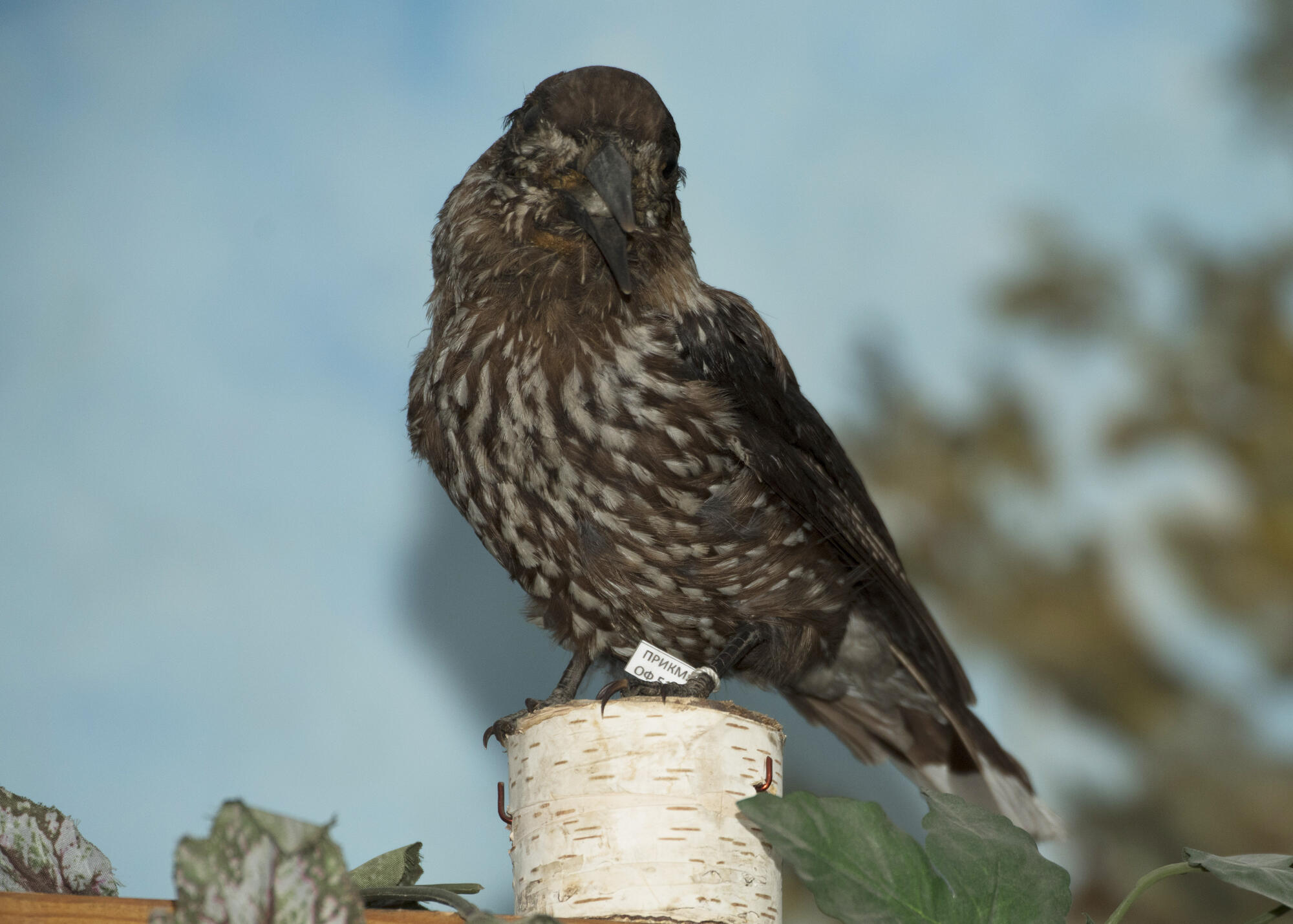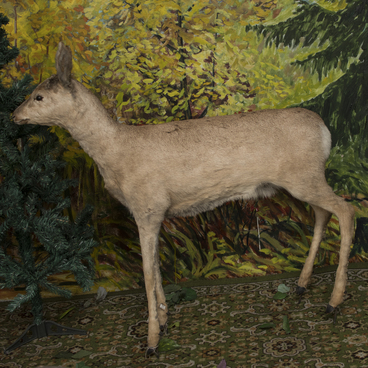The song thrush is a fairly small thrush common to Europe, Asia Minor and Siberia. From afar the bird looks like a common starling but on a closer inspection, round pale ochre-colored spots are clearly visible on its light sides and chest. In addition, unlike starlings, song thrushes have olive-grey feathers on their backs. The latter are also somewhat bigger than the former. Its body is 21—25 centimeters in length, the wingspan — 34 to 39 cm and its weight — 55 to 100 grams. Song thrushes feed on earthworms, slugs and different insects and their larvae. They also enjoy eating ripe fruit and berries.
These birds inhabit various types of forests and are just as widespread in deciduous woods as in taiga (i.e. boreal forests).
They are distinguished by their restless nature. If a song thrush is in trouble, it starts making loud noises. For instance, this happens when the bird falls behind its flock for some reason.
Song thrushes are regarded as migratory birds. Hence, they spend their winters in comfortable conditions, i.e. in warmer regions. However, if they have enough food for a cold season, they may either postpone their move or choose to remain for the winter.
Song thrushes return to their breeding grounds either in flocks or on their own. Females typically come back a week after males. Once the former arrive, a male performs a special dance ritual for its potential partner by lowering its wings, ruffling its feathers and hopping around her. If the female responds with a similar dance, the two birds become partners. A week later, they start building their nest in a location chosen by the female bird. Usually stumps or trees are selected. Song thrushes prefer to build their nests in coniferous trees, e.g. small firs and junipers, to other varieties. Brazen crows often destroy these birds’ nests and steal their eggs. In the wild, their other enemies include woodpeckers, squirrels, Eurasian jays, owls and birds of prey. Humans also pose quite a substantial threat to these birds. If there are no predators within their breeding grounds, song thrushes build their nests right on the ground. These birds are not in danger of extinction at present. In fact, they breed very actively.
While raising their offspring, song thrushes kill a particularly large number of insects. During this period, they make 200 or more trips per day in search of food. Once their youngsters get older, the entire family of song thrushes travel to forests where blueberries and other berries are starting to appear. While looking for food, these birds move on the ground by hopping often and in a characteristic manner.
Their song is very beautiful. Sometimes their trills can be mistaken for those of a common nightingale. But unlike the latter, who hide in difficult to reach spots, song thrushes perform their melodies while sitting right on the very top of trees. They sing particularly well closer to the evening, at dusk. Their songs are rhythmic, measured, high-pitched and long. They consist of low whistles and short trills, and practically each element in them is repeated 2 to 4 times. Song thrushes quite often imitate sounds made by other birds.
These birds inhabit various types of forests and are just as widespread in deciduous woods as in taiga (i.e. boreal forests).
They are distinguished by their restless nature. If a song thrush is in trouble, it starts making loud noises. For instance, this happens when the bird falls behind its flock for some reason.
Song thrushes are regarded as migratory birds. Hence, they spend their winters in comfortable conditions, i.e. in warmer regions. However, if they have enough food for a cold season, they may either postpone their move or choose to remain for the winter.
Song thrushes return to their breeding grounds either in flocks or on their own. Females typically come back a week after males. Once the former arrive, a male performs a special dance ritual for its potential partner by lowering its wings, ruffling its feathers and hopping around her. If the female responds with a similar dance, the two birds become partners. A week later, they start building their nest in a location chosen by the female bird. Usually stumps or trees are selected. Song thrushes prefer to build their nests in coniferous trees, e.g. small firs and junipers, to other varieties. Brazen crows often destroy these birds’ nests and steal their eggs. In the wild, their other enemies include woodpeckers, squirrels, Eurasian jays, owls and birds of prey. Humans also pose quite a substantial threat to these birds. If there are no predators within their breeding grounds, song thrushes build their nests right on the ground. These birds are not in danger of extinction at present. In fact, they breed very actively.
While raising their offspring, song thrushes kill a particularly large number of insects. During this period, they make 200 or more trips per day in search of food. Once their youngsters get older, the entire family of song thrushes travel to forests where blueberries and other berries are starting to appear. While looking for food, these birds move on the ground by hopping often and in a characteristic manner.
Their song is very beautiful. Sometimes their trills can be mistaken for those of a common nightingale. But unlike the latter, who hide in difficult to reach spots, song thrushes perform their melodies while sitting right on the very top of trees. They sing particularly well closer to the evening, at dusk. Their songs are rhythmic, measured, high-pitched and long. They consist of low whistles and short trills, and practically each element in them is repeated 2 to 4 times. Song thrushes quite often imitate sounds made by other birds.


